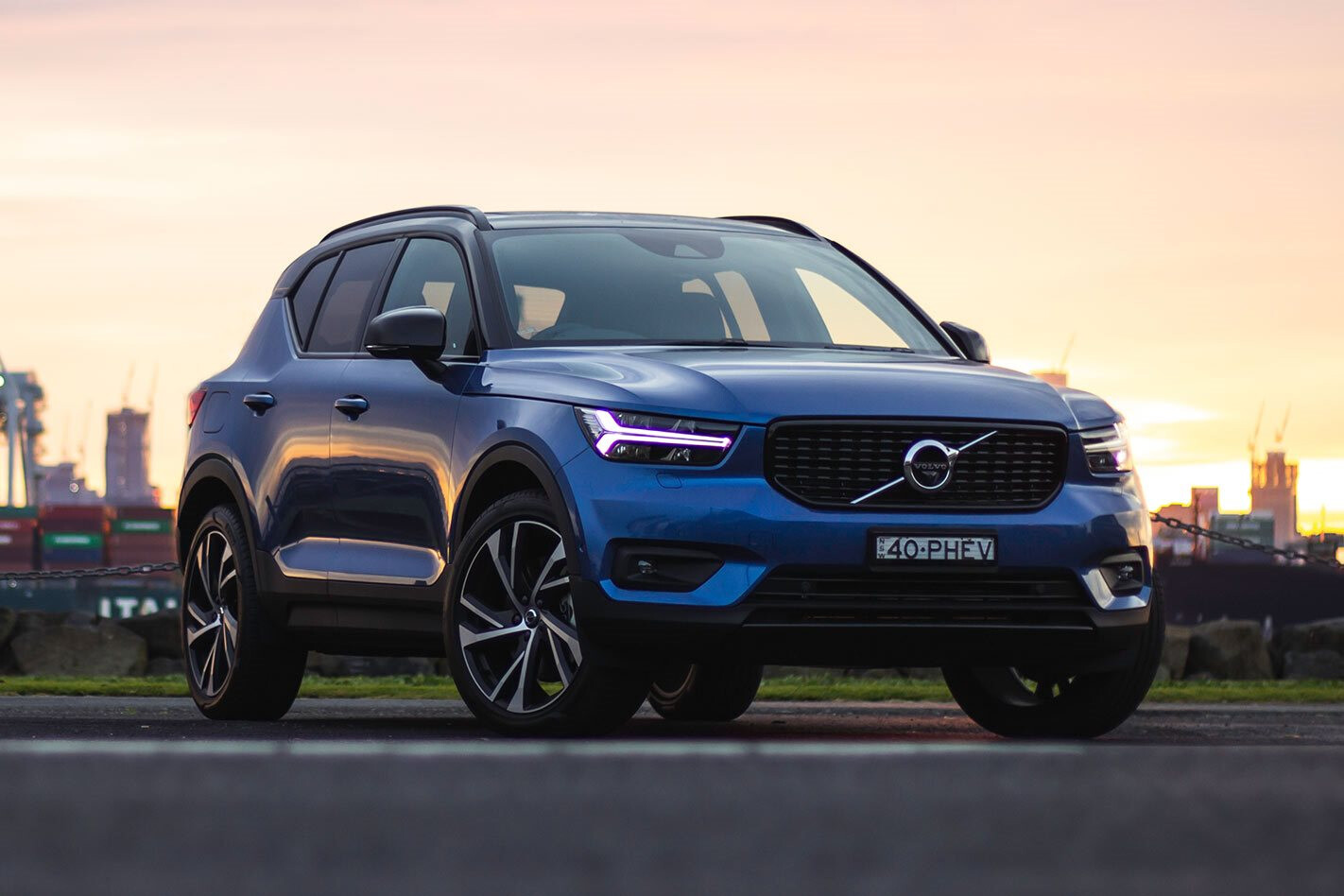Things we like
- Genuine economy gains
- Useful EV range
- Rich spec
- Powertrain performance
Not so much
- Ride a little firm on 20s
- Integration of electric/petrol not always seamless
- Wooden brake pedal
The Wheels Verdict: This plug-in hybrid is a welcome addition to the XC40 range. It will save you around 30 percent in fuel costs during regular driving and could slash your fuel bill altogether if you use it only for short journeys (around 40km) and keep it plugged in regularly. Powertrain performance is stronger than the on-paper numbers suggest, too, and the rest of the package is typical XC40 (which is to say, class leading) with a roomy cabin, a big boot and well-sorted dynamics. Only its high price, wooden brake pedal and sometimes clunky handover from battery to internal combustion propulsion blot the XC40 Recharge’s copy book.

WHAT IS THE VOLVO XC40 RECHARGE?
For now it’s the most fuel efficient, but also the most expensive, XC40 you can buy. Volvo is adding two electrified XC40s to its Australian range and this plug-in hybrid is the first to reach our shores. The biggest change is the powertrain. Where other XC40s use 2.0-litre four-cylinder petrol power, this one is propelled by a 1.5-litre three-cylinder petrol engine paired with a small battery pack and electric motor.
WHY WE’RE TESTING IT
To see if the Recharge’s circa-$8000 price premium over its conventionally powered stablemates is worth it. We’re also keen to test the performance and integration of the hybrid system. Volvo has added hybrid-power to other model ranges with great success, but will it work just as well in a smaller package?
THE VOLVO XC40 RECHARGE REVIEW
VOLVO has added a new flagship variant to its COTY-winning XC40 range. Dubbed ‘Recharge’ this plug-in hybrid is the first of two electrified XC40s heading our way and will be followed by an all-electric version in early 2021 that will usurp it both for price and performance. For now, though, this is the most expensive XC40 of the lot courtesy of a $64,990 sticker. That’s a chunky $8000 more expensive than the previous T5 range-topper and, initially at least, the cost-benefit analysis seems a little skew-whiff.

Equipment levels are on-par with the already very well equipped T5 R-Design, and the T5 is almost a second quicker to 100km/h, is lighter and has the benefit of all-wheel drive. The plug-in Recharge is front-drive only.
So why buy the hybrid? Saving fuel is the primary attraction. The Recharge combines a punchy 132kW/265Nm 1.5-litre three cylinder turbo petrol with a 10.7kWh battery pack and single electric motor good for 60kW/160Nm. Electric-only range is 45km (we managed 42km in urban conditions) and exactly how efficient your car is will depend on how often you plug it in. It’ll do up to 125km/h on battery-only propulsion so if you keep it fully charged and drive mostly short distances – say to the office and back – it’s possible you’ll get close to Volvo’s official 2.2L/100km.
Deplete the battery and you’ll rely mostly on the petrol engine, though electric propulsion is always there under light loads and to assist with sharp step-off from the lights. Without topping up the battery we recorded 7.5L/100km over 400km of urban driving, which is a healthy 30 percent improvement on the T5 long-termer Wheels ran last year in the same location and conditions.
Real-world performance is better than the on-paper numbers suggest, too. Slotting into gaps in traffic is a cinch thanks the electric motor’s instant shove, though the hand-off from battery to petrol motor isn’t always the smoothest. It’s fine under light throttle openings but suddenly asking for max power results in a pause, then a jolt, as the ICE component of the powertrain wakes up.
The brakes can take some getting used to as well. Like a lot of hybrids they lack progression and are plagued by a wooden pedal that’s difficult to modulate. The initial slowing phase is nicely calibrated, but things become difficult to judge when you need to bring the car to a stop.

The rest of the package is typical XC40, which is to say class-leading. The cabin is unexpectedly roomy and beautifully screwed together, the boost is a useful 460L, the steering is light and accurate (if a little too remote) and there a high levels of equipment and safety gear. One key dynamic variable to consider is ride quality. Aussie Recharge variants come standard with Volvo’s R-Design pack which adds gloss-black exterior detailing and, notably, stiffer springs and 20-inch wheels. While the primary ride is well judged, the Recharge does suffer from some impact harshness over smaller bumps and sharp edges. If ride quality is a high priority, you can also opt for 19-inch wheels with chubbier sidewalls as a no cost option. Frustratingly, Volvo no longer offers adaptive dampers for 2021-model year XC40s.
Still, spec it correctly and the XC40 Recharge is one of those rare cars that’s more than the sum of its parts. It makes more sense in the real world than it does on paper, providing you’re willing to pay for the privilege.
Volvo XC40 Recharge specs
- Model: Volvo XC40 Recharge
- Engine: 1477cc 3cyl, dohc, 12v, turbo
- Motor: Single (front axle)
- Battery: 10.7kWh lithium-ion
- Power: 195kW (combined)
- Torque: 265Nm (engine) + 160Nm (motor)
- Transmission: seven-speed dual-clutch
- Kerb weight: 1760kg
- 0-100km/h: 7.3sec (claimed)
- Economy: 2.2L/100km
- Price: $64,990
- On sale: Now
Things we like
- Genuine economy gains
- Useful EV range
- Rich spec
- Powertrain performance
Not so much
- Ride a little firm on 20s
- Integration of electric/petrol not always seamless
- Wooden brake pedal






